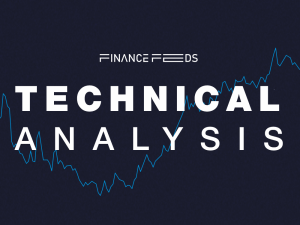RBA holds rates steady as expected
Orbex’s Sophie-Hannah Eliades looks at this week’s forthcoming fourth quarter wage growth data, among other market related events. Expectations point to the Australian unemployment rate staying unchanged at 5.5%. Meanwhile, the economy is forecast to rise 15.2k on the month. This is a somewhat slower pace of increase compared to 34.7k that was seen the month before.

Analysis by Sophie-Hannah Eliades at Orbex
The Reserve Bank of Australia held the cash rate unchanged at a record low of 1.5% at its monetary policy meeting held last Tuesday. The central bank preferred to wait for further evidence of wage growth which has currently remained subdued and lies at the lowest levels in the past two decades.
The decision to leave interest rates unchanged comes as the central bank has left interest rates unchanged since the last rate cut that was delivered in May and August of 2016.
“Notwithstanding the improving labor market, wage growth remains low. This is likely to continue for a while yet, although the stronger economy should see some lift in wage growth over time,” the RBA Governor Lowe said at the conclusion of the meeting.
Although inflation had remained somewhat better than expected according to recent data, the income growth in Australia continued to remain weak. Data suggested that there was still plenty of slack to absorb in the Australian labor market. As a result, the lower wage growth has kept consumer prices Australia consistently below the RBA’s target band. Economists are forecasting that it will be a long way before inflation can rise back to the central bank’s target band.
The RBA’s monetary policy meeting was in stark contrast to other major central banks which have come out more hawkish on forward guidance, The Federal Reserve Bank, the European Central bank and the Bank of Canada have been more hawkish in recent times with the Fed and the BoC continuing with rate hikes. Meanwhile the ECB has been tapering its QE purchases.
Joining the bandwagon was also the Bank of England which had signaled later last week that interest rates could rise faster than it had initially anticipated.
The Australian labor market continues to remain the major concern for central bank officials. The labor market was seen to be edging higher with 400,000 new jobs being created in 2017. But the underlying employment rate was seen to be improving only slightly.
Later this week, the fourth quarter wage growth data will be coming out. Expectations point to the Australian unemployment rate staying unchanged at 5.5%. Meanwhile, the economy is forecast to rise 15.2k on the month. This is a somewhat slower pace of increase compared to 34.7k that was seen the month before.
Australian retail sales fall in December
Ahead of the RBA’s meeting, the retail sales report data for December showed a sharp decline. The report came amid a revised higher retail sales report for November 2017. Data from the Australian Bureau of Statistics showed that retail sales in December fell 0.5% on a month over month basis.
This brought the quarterly retail sales to rise just 0.9% in the fourth quarter ending December 2017. The weaker pace of increase comes amid a fall in household goods sales. Data from ABS showed that household goods sales had declined 2.6% on the month in December.
This came as November’s household goods sales showed a 4.7% increase.
The RBA had previously cited significant risks to the outlook with regards to consumer spending and said that household debt levels were rising while wage growth had remained low.
RBA publishes economic forecasts
The Reserve Bank of Australia published its economic forecasts on Friday. Data showed that according to the central bank, inflation could rise back to the central bank’s target band only around 2020. GDP growth for the year 2018 is forecast to average around 3% and rise to 3.7% in the next year.
Consumer prices are expected to rise to 2.25% by December 2018 and are forecast to rise to 3.25% by December 2020. The RBA has an inflation targeting band of 2% – 3%.









